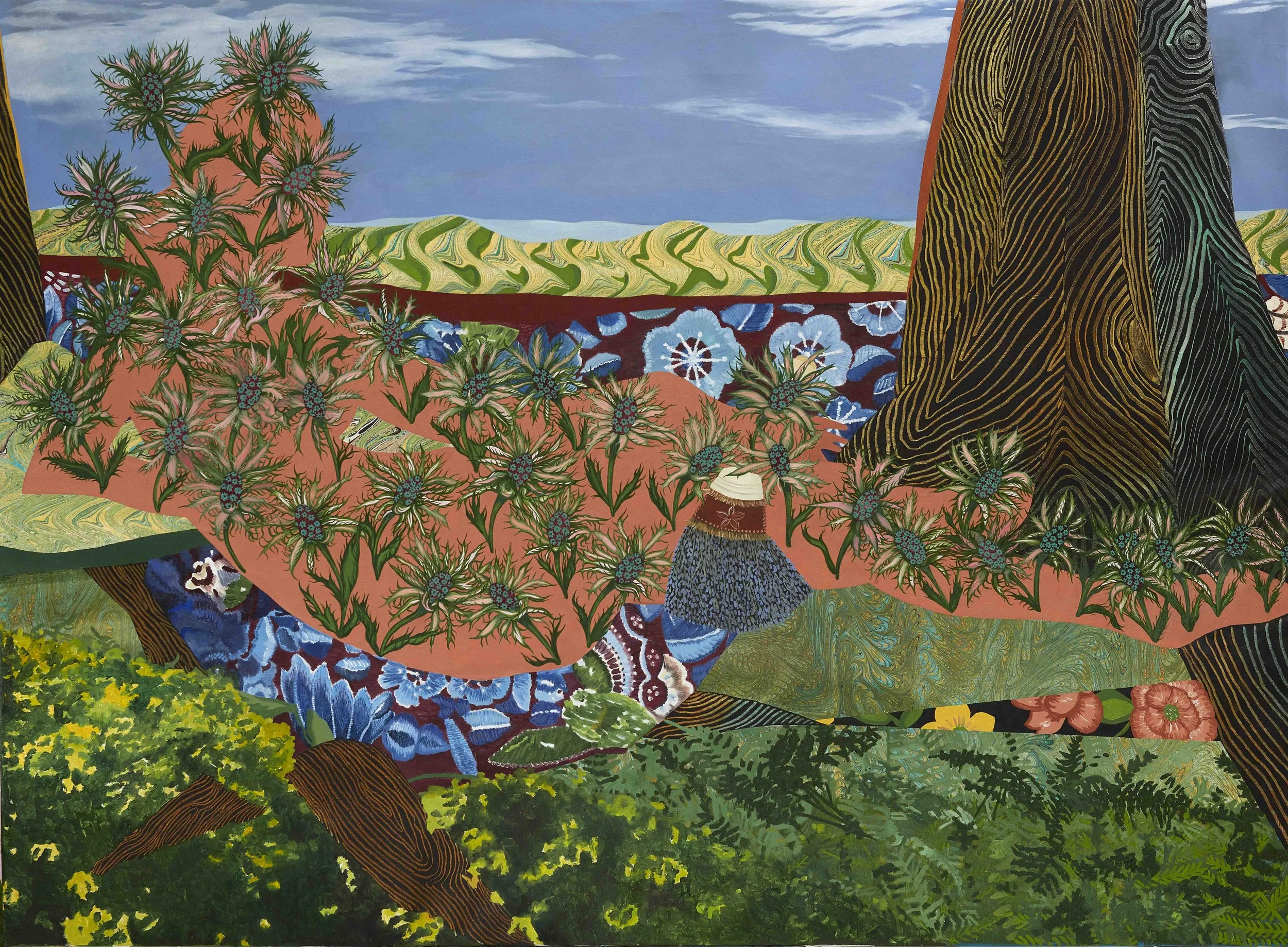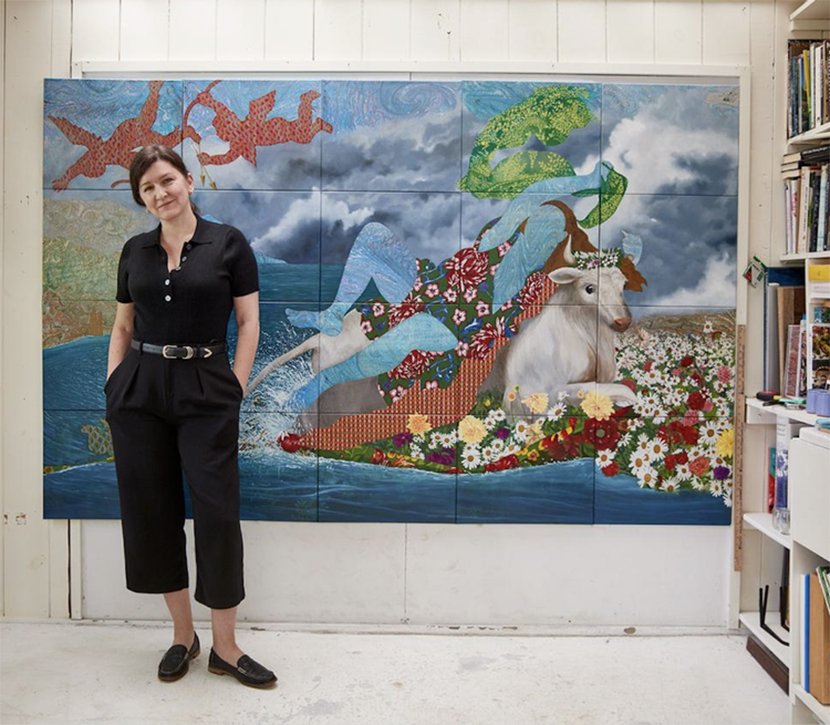“Thinkers Who Mother” | Dinorá Justice
Jan 23, 2023
By Nicole Graev Lipson
Dinorá Justice, Portrait Forty-Five, after Ingres La Grande Odalisque, 2021, oil on canvas, 38x52"
If your January inbox and feeds look anything like mine, then you too have been bombarded with ads that promise to deliver you—via this bootcamp or that goal-tracking app or this juice fast—to a better, shinier version of yourself this year.
The desire for transformation lies deep in the American psyche. I’m hardly immune to this yearning: As a child, I kept a running list of self-improvement goals in my diary (Practice splits daily! Learn to make Rice Krispie treats!). Today, I’m the owner of not one but three bullet journals I’ve started with high hopes and then forgotten to use.
This January, I’m trying out a different sort of resolution, which is to focus less on improving myself and more on caring for myself. By self-care, I don’t mean slathering myself with creams or splurging on a spa package (not that I’d reject one), but doing what in our productivity-obsessed world somehow feels far harder: making space each week to fill my creative well.
Last Wednesday, during an hour that I usually reserve for filling out SignUpGenius forms and calling the orthodontist, I slipped out of the house to an exhibit by one of my favorite artists—the Brazilian-American painter Dinorá Justice—at the Museum of Fine Arts Boston. My idea was to try what The Artist’s Wayauthor Julia Cameron calls an “Artist Date”—time set aside to do a nonroutine activity alone.
This was actually my second visit to Justice’s “The Lay of the Land” exhibit, but the first without my kids hurrying me off to the Egyptian wing to see the mummies. Let me tell you: Walking through that gallery by myself, with time to truly pause and think, felt so indulgent and transgressive you’d think I’d snuck off in the middle of the day to have sex with my lover.
I’ve thought a lot about this discomfort in the past week. It showed just how deeply I’ve internalized messages about what it means to make “good” use of my time, especially as a woman and a mother. Forty minutes alone at an exhibit on a Wednesday shouldn’t—truly, it shouldn’t—have felt this strangely radical.
There’s only one way to change this, which is to keep on dating myself until it’s second nature. Maybe you’ve tried this, or would like to? I’d love to hear where you take yourself, and how the date goes.
—Nicole
THINKER SPOTLIGHT
The first time I saw one of Dinorá Justice’s paintings, it was as if my nerve endings had been nudged awake. It wasn’t just the saturated colors and intricate details, but the way the painting—a reimagining of Manet’s famous nude Olympia, transported from her courtesan’s boudoir to an airy mountain—was both familiar and new, conventional and subversive.
Olympia is just one of the canonical nudes Justice frees from the male gaze in her work. She has also taken on Ingres’ La Grande Odalisque and Matisse’s Reclining Nude, as well as Titian’s The Rape of Europa. In Titian’s “masterpiece,” we look on as the naked Europa is abducted by Jupiter disguised as a bull; in Justice’s update, she’s been safely delivered to a gentle, floral paradise.
Justice’s work isn’t overtly about motherhood, but as I wandered among her canvases during my Artist Date, I couldn’t help but think about how grossly our culture devalues the work of nurturing. As Justice herself has pointed out, the feminine personification of “Mother Nature,” which should inspire reverence, has been twisted by patriarchy to “extend its logic of subjugation and exploitation to nature, with disastrous results.” I love how Justice restores Mother Nature from a passive victim to an agent of healing.
“The Lay of the Land” was curated by the brilliant Michelle Millar Fisher, whose must-read book Designing Motherhood (co-written with Amber Winick) explores over eighty objects that have shaped reproduction and caregiving. It’s no wonder the theme of care shines through in this collaboration.
To learn about and read more of Nicole’s work you can head to her website by following the link, here.


